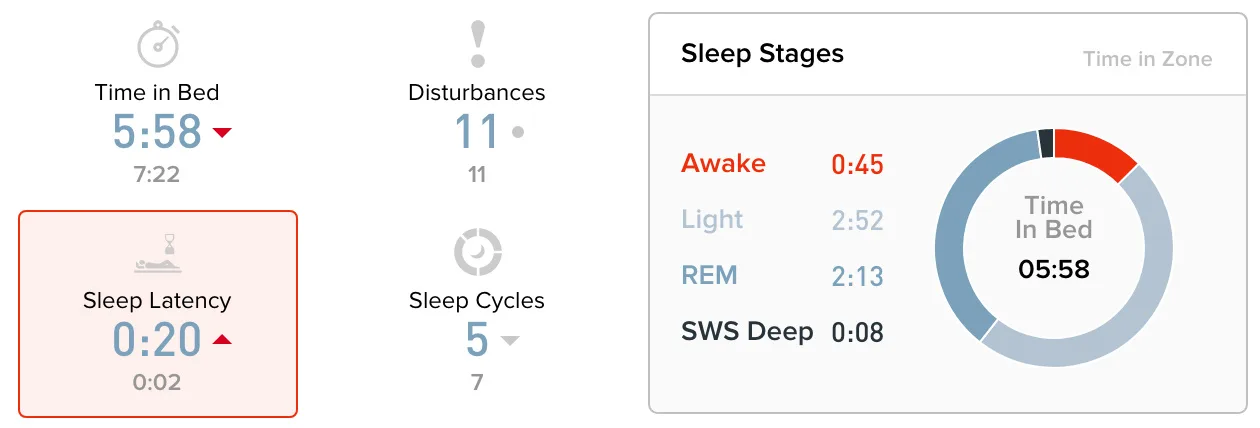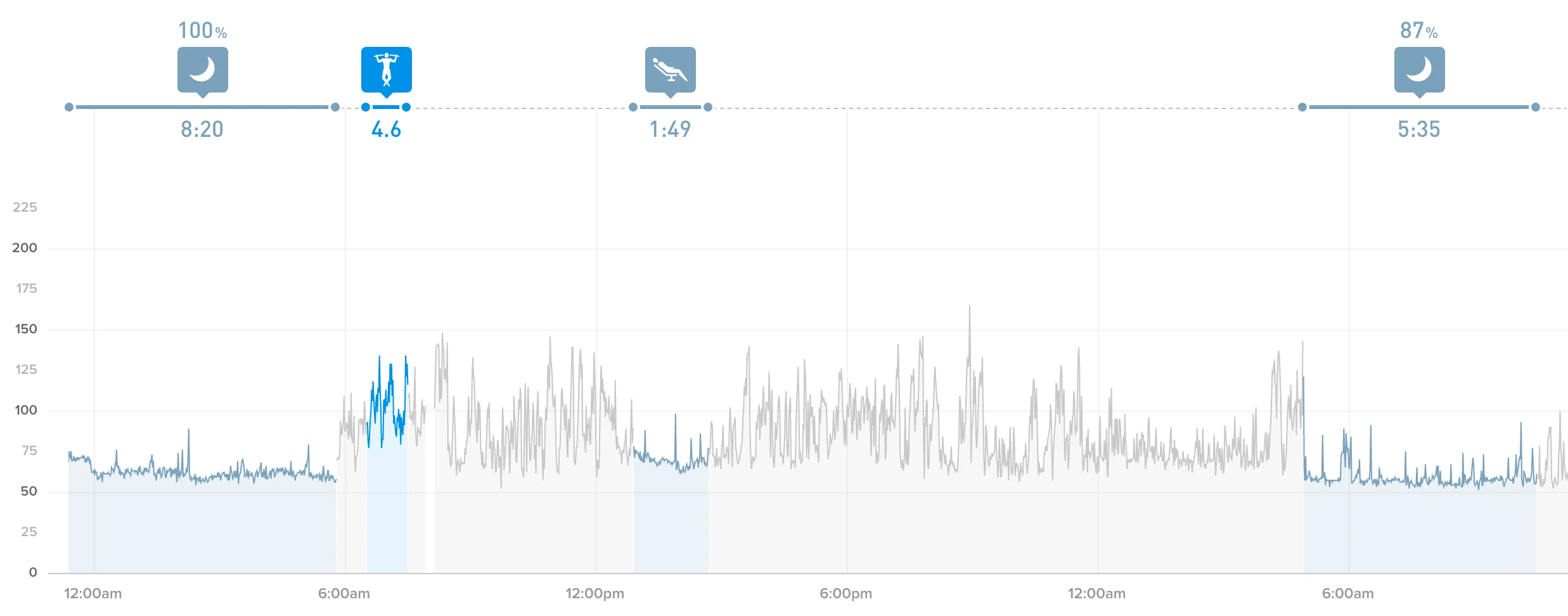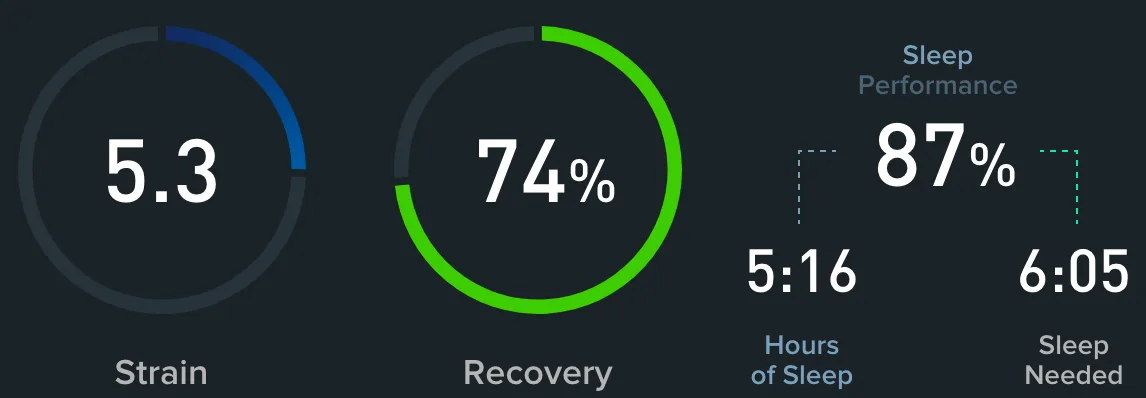Topics
- Article
Naps Keep Us Safe: Tracking the Sleep of a Commercial Airline Pilot
“I woke up this morning in Las Vegas. We landed there around 12:30 am. By the time I got to bed it was after three. But my body is on east-coast time, so it thought it was 6 am and time for me to wake up. Falling asleep was a struggle, to say the least.” – Jason, Commercial Airline Pilot
For many elite athletes, napping plays a significant role in their training routines. Five-time Super Bowl champion Tom Brady has spoken on several occasions about the value of naps. NBA All-Star DeAndre Jordan told us that he naps 5-7 times a week, and “always on game days.” Leading WHOOP athletes have also recommended taking naps as their No. 1 tip for achieving better Recoveries. But even for people who aren’t competitive athletes, naps can still be an essential part of functioning professionally in their day-to-day lives.
A few months ago, we published a story on The Locker about the effect flying a red-eye has on your body. That got us wondering, if overnight flights wreak havoc on the Sleep and Recovery of passengers, how brutal must they be for the pilots who endure them routinely?
Naps, we discovered, are the key.
We outfitted a pilot from one of the major airlines with a WHOOP Strap 2.0 to see what we we might find out. The pilot, who we’ll call Jason, gave us permission to use his data and offered to speak with us under the condition of anonymity.
“I wanted to be a pilot from the time I was a little kid, probably 4 years old,” Jason told us. “I’ve been flying professionally for nearly two decades, and you never get used to the hours. One trip you’re in the air early in the morning, the next trip you’re flying late at night. Your body is never on a normal pattern for sleep, eating, exercise, or anything else.”
“I did a lot of red-eye flights when I first started,” Jason said. “Coming back from those is torture on your body. Recovering afterwards is very, very tough. Trying to sleep in a hotel during the day is not easy. We call it a ‘day sleep’ in the industry. You have to force your body to believe it’s nighttime and sleep when it doesn’t want to sleep.”
That was the case on the day we spoke to Jason, when he’d just arrived in Las Vegas from the east coast early that morning. “My sleep latency (the amount of time it takes to fall asleep) when I got to bed this morning was 20 minutes, usually it’s just two or three,” he said. “And even after I finally fell asleep, trying to get quality rest was tough.”
A look at Jason’s Sleep data from that day confirms exactly what he told us:

He was awake for 45 minutes of the 5:58 he spent in bed, and only got eight minutes of Deep Sleep.
“Imagine how difficult it is to adjust for international pilots who travel over 12 time zones,” Jason speculated. He did inform us that flights of that length are required to have four pilots on board working in 3-4 hour shifts, with two on and two off (usually napping in between). “They also tend to have at least 48-hour layovers to recover,” he said.
Due to his seniority with the airline, Jason has a more favorable flight schedule than many other pilots. “Each month we bid for our schedules,” he told us. “We log into a website and put in our preferences. If you’re bottom of the barrell, you’re most likely going to be doing all the red-eyes and the midnight flights that nobody wants. There are also reserve pilots who are on call, like a doctor, and have to fill in when needed. In that case, you have no clue where you’re going and your phone could ring at any time. I did reserve for about three years, thankfully it was before I had a family.”
Jason has a wife and two children, ages five and three. “With kids at home it’s difficult to meet the WHOOP Sleep goals,” he said. “Most of my trips begin really early in the morning. I’m often waking up at 3 or 4 am and out the door at 4:30 am. For me to hit my recommended Sleep Need I usually have to get to bed by 7 or 8 pm, which is really hard to do.”
“On the road, I can make my hotel rooms quiet, dark and cool. I’ve actually noticed a lot of higher Recoveries in the Green on the way back from trips, as opposed to starting trips when I’m usually in the Yellow. If you talk to pilots that have young kids at home and ask ‘What do you do on the road? Do you hit the tables when you’re in Vegas? Do you go sailing in San Diego?’ They’ll say ‘No dude, I sleep!’”
We asked Jason to describe one of his more trying flight experiences since he’s be wearing the WHOOP Strap:
“There was a red-eye flight from the northeast to the caribbean last month. We’d been delayed for about two-and-a-half hours and didn’t take off until after midnight. My fellow pilot and I were both a little frustrated about the delay and we were not looking forward to landing at 4 am and following it up with a ‘day sleep’ before our next flight assignment later that night. That day ‘sucked’ for lack of a better term.”
However, Jason’s WHOOP data indicates that he actually handled the situation extremely well:

He slept 8:20 the night before, getting 100% of his Sleep Need with an 89% Recovery. Jason then napped for 1:49 that afternoon in anticipation of his overnight flight, reducing his Sleep Need for the next day. Upon arriving in the caribbean, he got to bed at 4:55 am, then awoke at 10:30 am. He slept for 5:16 of the 5:35 he spent in bed, and because his nap the previous afternoon had reduced his Sleep Need to 6:05, he still managed to log an 87% Sleep Performance and was 74% Recovered for his flight that evening.

“WHOOP has made me realize that naps are golden,” Jason told us. “If I get lucky I can nap at home when my three-year old does. On the road, getting an hour or two in does wonders, it makes it possible to meet my sleep need that night.”
Jason explained that pilots are responsible for telling the airlines whenever they believe they are too fatigued to fly: “You have to know your own body. The FAA says that you, the pilot, must determine if you’re fit for duty. You have to ask yourself that question before every flight. You’re legally required to remove yourself if you’re not fit. I’ve called in fatigued before. When you do, you’re totally protected.”
Armed with WHOOP, fatigue hasn’t been an issue for Jason. Over a recent one-month span that included both overnight flights discussed, as well as multiple other red-eyes, Jason was able to average 71% daily Recoveries and a 91% Sleep Performance:

How did he do it? Jason’s work schedule listed 14 flights in those 30 days. His WHOOP data shows 15 naps in that time, including one either before or after each day he travelled. “I’ve started making more of an effort to nap since using WHOOP,” he added. “The difference that makes in my next-day Recovery is eye-opening.”
“The FAA and the airlines are doing their best to make schedules as gentle as possible. But, we’re humans flying, not robots,” Jason said. “We could be short on sleep or have other stressors in our lives, just like anybody else that shows up for a 9-5 job. We just happen to be in charge of upwards of a couple hundred lives. No major U.S. airline has had an accident since November of 2001. The industry is so safe right now, the training and the technology has made leaps and bounds.”
With pilots like Jason monitoring their Sleep with WHOOP, flying the friendly skies gets even safer.
Takeaways for WHOOP Users on Naps,
- Naps during the day reduce that night’s Sleep Need. You may be surprised how much easier it is to achieve a Peak Sleep Performance when you’ve gotten a nap in the day before.
- Don’t think about each sleep in isolation. As Jason’s caribbean trip shows, you can prepare your body days ahead of time to offset the impact of a rigorous schedule.
- To maximize the quality and efficiency of your Sleep, set yourself up with the most ideal conditions. Make your bedroom as dark as possible and keep the temperature cool. More tips and an explanation of the stages of Sleep here.
- T__ake note of when you have longer than usual Sleep latencies, or above average awake times during the night. Were there factors in your behavior or environment that may have contributed?